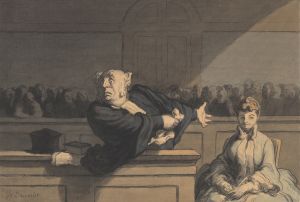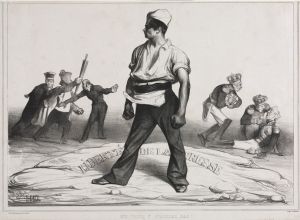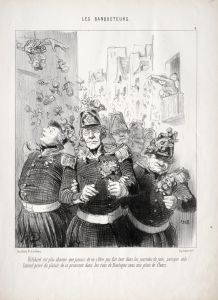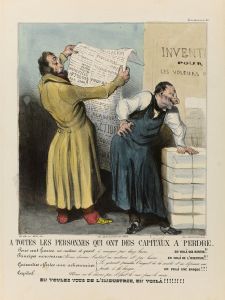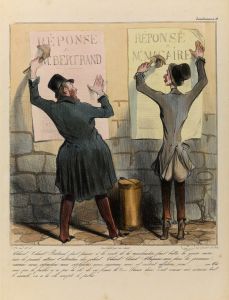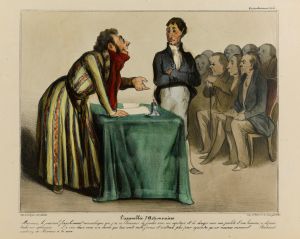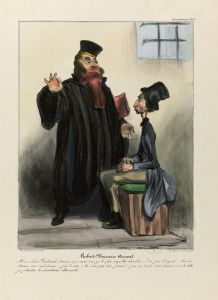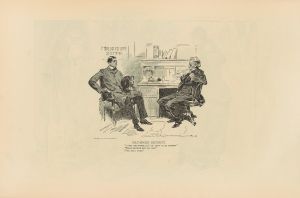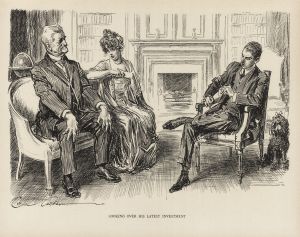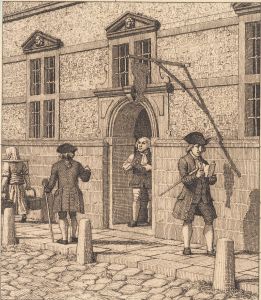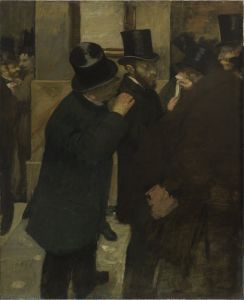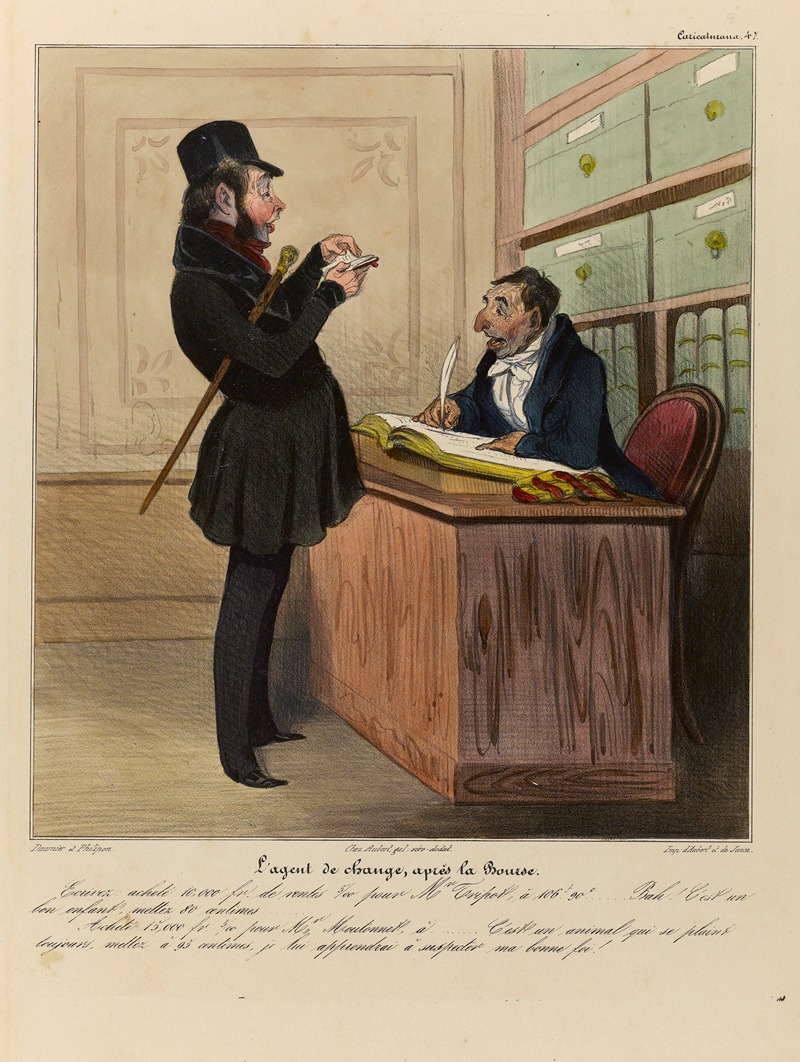
L’agent de change, après la Bourse
A hand-painted replica of Honoré Daumier’s masterpiece L’agent de change, après la Bourse, meticulously crafted by professional artists to capture the true essence of the original. Each piece is created with museum-quality canvas and rare mineral pigments, carefully painted by experienced artists with delicate brushstrokes and rich, layered colors to perfectly recreate the texture of the original artwork. Unlike machine-printed reproductions, this hand-painted version brings the painting to life, infused with the artist’s emotions and skill in every stroke. Whether for personal collection or home decoration, it instantly elevates the artistic atmosphere of any space.
Honoré Daumier, a prominent French artist known for his caricatures, paintings, and sculptures, created the artwork titled "L’agent de change, après la Bourse" during the 19th century. Daumier was renowned for his keen observation of social and political life in France, and his works often provided a satirical commentary on the society of his time.
"L’agent de change, après la Bourse" translates to "The Stockbroker, After the Stock Exchange." This piece is part of Daumier's extensive exploration of the financial world, a subject he frequently depicted with a critical eye. His works often highlighted the absurdities and moral ambiguities of the financial sector, reflecting the economic realities and social issues of 19th-century France.
Daumier's art was deeply influenced by the political and social climate of his era. During the 19th century, France experienced significant economic changes, including the rise of the bourgeoisie and the expansion of financial markets. The stock exchange became a symbol of both opportunity and risk, attracting individuals eager to profit but also vulnerable to loss. Daumier captured these dynamics through his art, often focusing on the human element within the financial system.
In "L’agent de change, après la Bourse," Daumier likely portrays a stockbroker after a day at the stock exchange. While specific details about this particular artwork are limited, Daumier's typical style involved exaggerated features and expressions to convey the emotional and psychological states of his subjects. His caricatures were not merely humorous but also served as a critique of societal norms and behaviors.
Daumier's work was published in various satirical journals, most notably "Le Charivari," where he used lithography to reach a wide audience. His ability to capture the essence of his subjects with minimal lines and his talent for storytelling through imagery made his works both accessible and impactful. Through his depictions of stockbrokers and other figures, Daumier commented on the greed, ambition, and folly often associated with the financial world.
Despite facing censorship and legal challenges due to the political nature of his work, Daumier remained a prolific artist throughout his life. His contributions to art and society were recognized posthumously, and he is now celebrated as one of the great masters of caricature and social commentary.
"L’agent de change, après la Bourse" fits within Daumier's broader oeuvre, which continues to be studied for its artistic merit and historical significance. His ability to capture the complexities of human nature and society through his art ensures that his work remains relevant and appreciated by audiences today.






